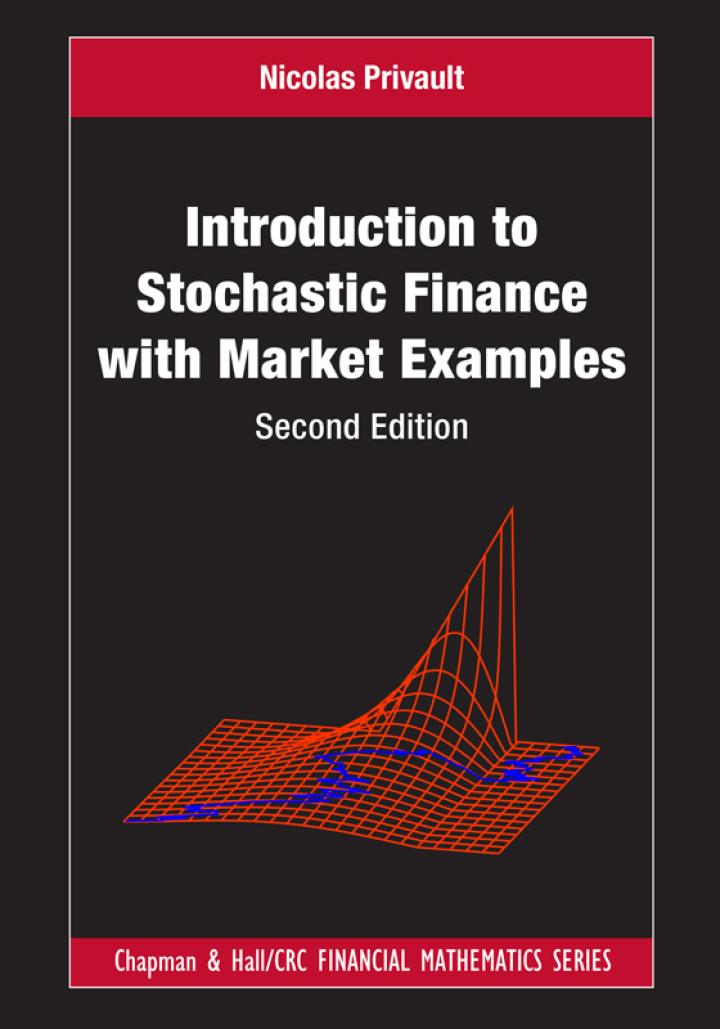Consider two assets whose prices (S_{t}^{(1)}, S_{t}^{(2)}) follow the Bachelier dynamics [ d S_{t}^{(1)}=mu S_{t}^{(1)} d t+sigma_{1}
Question:
Consider two assets whose prices \(S_{t}^{(1)}, S_{t}^{(2)}\) follow the Bachelier dynamics
\[
d S_{t}^{(1)}=\mu S_{t}^{(1)} d t+\sigma_{1} d W_{t}^{(1)}, \quad d S_{t}^{(2)}=\mu S_{t}^{(2)} d t+\sigma_{2} d W_{t}^{(2)}, \quad t \in[0, T]
\]
where \(\left(W_{t}^{(1)}ight)_{t \in[0, T]},\left(W_{t}^{(2)}ight)_{t \in[0, T]}\) are two Brownian motions with correlation \(ho \in[-1,1]\), i.e. we have \(d W_{t}^{(1)} \cdot d W_{t}^{(2)}=ho d t\). Show that the spread \(S_{t}:=S_{t}^{(2)}-S_{t}^{(1)}\) also satisfies an equation of the form
\[
d S_{t}=\mu S_{t} d t+\sigma d W_{t},
\]
where \(\mu \in \mathbb{R},\left(W_{t}ight)_{t \in \mathbb{R}_{+}}\)is a standard Brownian motion, and \(\sigma>0\) should be given in terms of \(\sigma_{1}, \sigma_{2}\) and \(ho\).
By the Lévy characterization theorem, Brownian motion \(\left(W_{t}ight)_{t \in \mathbb{R}_{+}}\)is the only continuous martingale such that \(d W_{t} \cdot d W_{t}=d t\).
Step by Step Answer:

Introduction To Stochastic Finance With Market Examples
ISBN: 9781032288277
2nd Edition
Authors: Nicolas Privault





